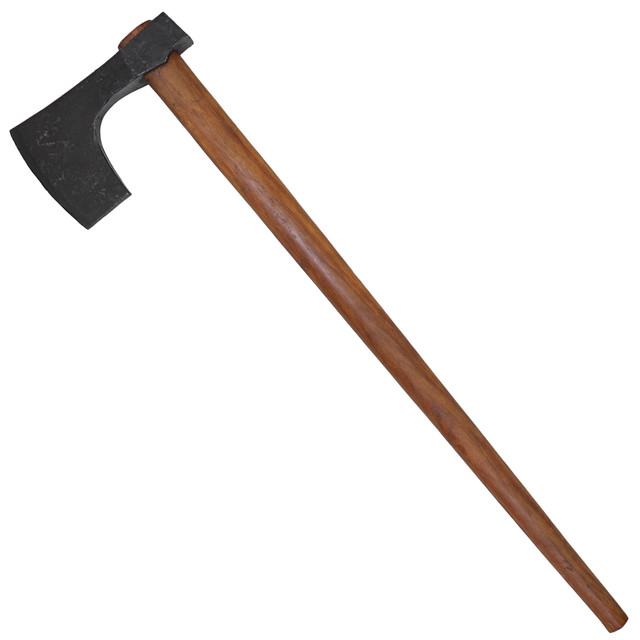Medieval Axe Fighting Techniques
Posted by SwordsSwords on Jul 5th 2024
The medieval axe was a formidable weapon in the hands of skilled warriors. Known for its versatility and devastating power, it played a significant role in many historical battles. This blog delves into the various fighting techniques employed with medieval axes, exploring their effectiveness and the skill required to wield them.
The Versatility of the Medieval Axe
Types of Medieval Axes
Before diving into the techniques, it's essential to understand the different types of medieval axes. These include the medieval battle axe, medieval war axe, and the viking battle axe. Each type had unique characteristics suited for specific combat situations. The medieval battle axe was often double-headed, allowing for more versatility in attacks. The viking battle axe was known for its lightweight design, enabling quick and precise strikes.
Key Features
Medieval axes varied in size, shape, and weight. Common features included a long handle for extended reach and a heavy, sharp blade for powerful blows. The combination of these elements made the battle axe medieval a deadly weapon in close combat.
Basic Axe Fighting Techniques
The Overhead Chop
One of the most straightforward techniques is the overhead chop. This move involves raising the axe above the head and bringing it down with force on the opponent. The heavy blade of the medieval axe can easily penetrate armor and inflict severe damage.
The Hook and Pull
This technique utilizes the axe's curved blade to hook an opponent's shield or weapon. Once hooked, the axe is pulled sharply to disarm or destabilize the opponent. This move showcases the versatility of the medieval battle axe in both offense and defense.
The Sweeping Slash
A sweeping slash is a horizontal attack aimed at the opponent's midsection. This technique uses the axe's weight and momentum to deliver a powerful blow that can incapacitate or kill an adversary.
Advanced Techniques and Strategies
The Feint
A feint involves faking an attack to draw the opponent into a vulnerable position. For example, a warrior might pretend to execute an overhead chop but instead perform a quick lateral slash. This strategy relies on speed and deception, making it effective in combat with the medieval war axe.
The Shield Splitter
Designed to break through an opponent's defenses, the shield splitter is a powerful downward strike aimed at the shield. The force of the medieval axe can shatter wooden shields and leave the opponent exposed to follow-up attacks.
The Grapple and Strike
This technique combines grappling with striking. The warrior uses the axe to hook the opponent's armor or limbs, pulling them off balance and then delivering a killing blow. The viking battle axe is particularly effective for this due to its lightweight design and sharp edge.
Training and Mastery
Physical Conditioning
Wielding a medieval battle axe requires significant physical strength and endurance. Warriors trained extensively to develop the muscles needed for powerful and sustained attacks. Modern enthusiasts of historical combat often engage in similar training regimens to master these ancient techniques.
Practice and Sparring
Just like any martial art, proficiency with a medieval war axe comes from practice. Historical warriors would spar with each other to hone their skills, and modern reenactors and martial artists do the same. Sparring helps in understanding the weapon's dynamics and improving reaction times.

Where to Buy Medieval Axes
For those interested in owning a piece of history, there are many medieval axes for sale online. Reputable retailers like swordsswords.com offer a variety of options, from medieval battle axes to viking battle axes. These replicas are perfect for collectors, reenactors, and anyone fascinated by historical weaponry.
Conclusion: The Enduring Legacy of the Medieval Axe
The medieval axe remains a symbol of power and skill in the annals of history. Its various fighting techniques demonstrate the ingenuity and prowess of ancient warriors. Whether used in historical battles or modern reenactments, the medieval battle axe continues to captivate the imagination with its lethal efficiency and timeless appeal.

